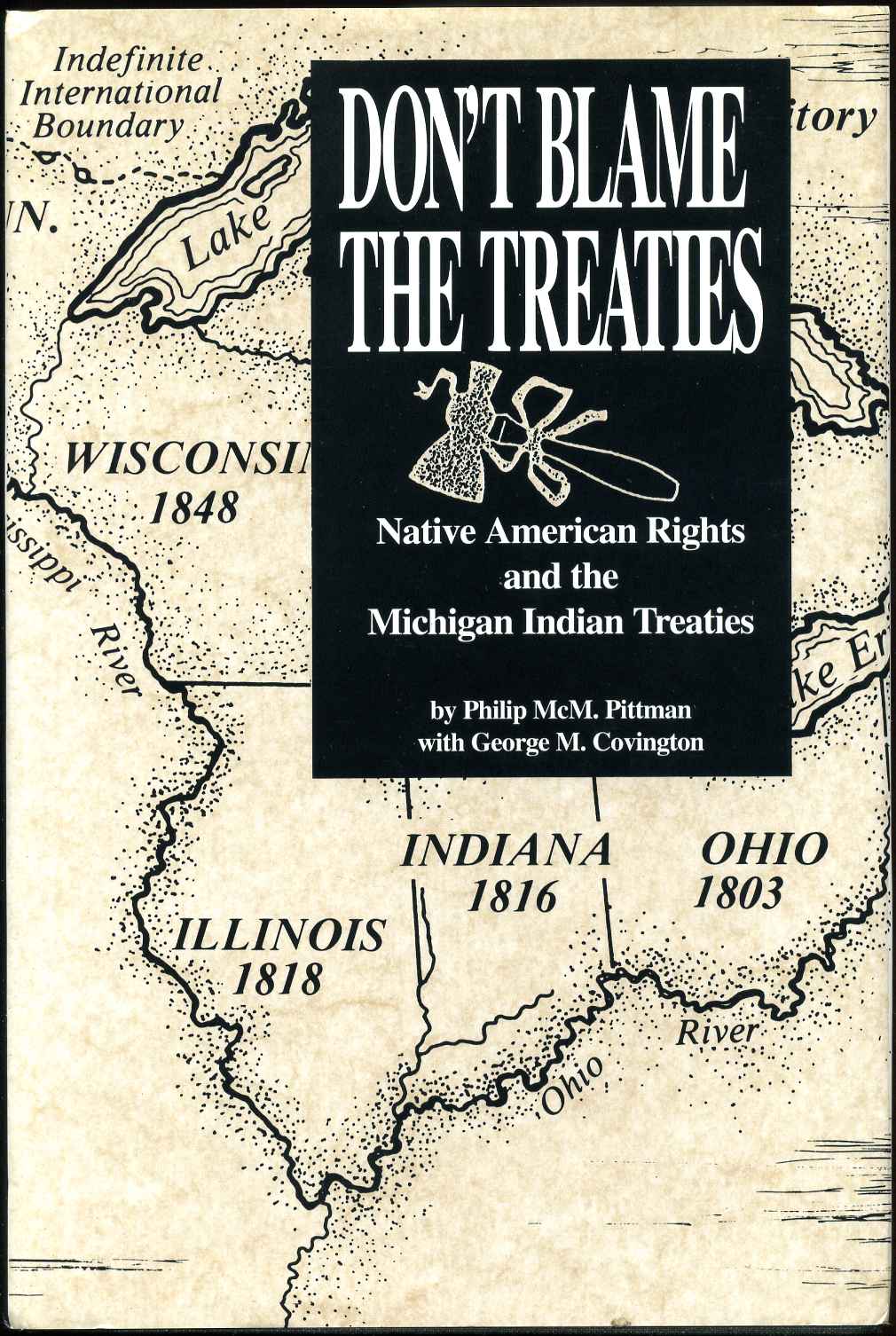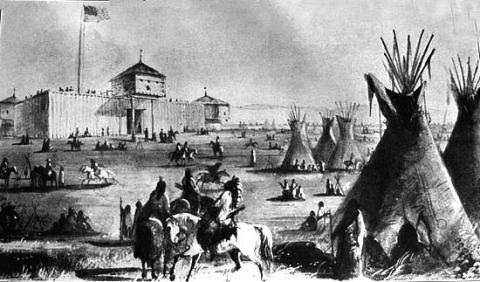The 1854-1855 Western Washington Treaties
( – promoted by navajo)
A treaty is simply an agreement between two sovereign nations. The Constitution indicates that Indian tribes are nations and thus the United States entered into many treaties with Indian nations. In 1853 Isaac I. Stevens was appointed Governor of the newly created Washington Territory by President Franklin Pierce. The appointment was a reward for Stevens’ support of Pierce’s presidential candidacy. One of Stevens’ first tasks was to “negotiate” or impose treaties on the Indian nations of Western Washington.
Like many politicians of this era, Isaac Stevens was a firm believer in the concept of Manifest Destiny and viewed Indians as a barrier to the inevitable development of American civilization. In Western Washington, his task was to consolidate the Indian nations onto reservations and thus free the land for non-Indian development.

In order to streamline the treaty process, Stevens created a kind of boiler plate which utilized the same basic wording for all of the treaties. Stevens saw the Indians as a single group, rather than autonomous sovereign nations. Believing that Indian cultures contained nothing that was valid, he was unaware of the culture distinctions between the different Indian nations.
In general, the treaties called for the end of tribal warfare (and are therefore considered “peace treaties”), the surrender of vast amounts of Indian lands to the United States government, and the confinement of the tribes to several small reservations. In general the treaties called for tribes to be restricted to certain areas (reservations) and it was not uncommon for tribes with totally different languages and cultures to be grouped together.
The treaties recognized the Indian right to hunt and fish at all usual and accustomed places. The wording of the Stevens treaties stated:
“The right of taking fish, at all usual and accustomed grounds and stations, is further secured to said Indians in common with all other citizens of the Territory, and of erecting temporary houses for the purpose of curing them, together with the privileges of hunting, gathering roots and berries, and pasturing their horses on open and unclaimed lands.”
The Americans reasoned that by permitting the tribes to fish and hunt as they had for generations, the government would not have to supply the tribes with food.
The tribes were also promised schools and medical care.
Treaty negotiations were conducted in Chinook Jargon (also called Chinook Wawa). As a jargon, Chinook Wawa was developed as a simplified language of trade. It had a limited vocabulary and grammar which made it easy to learn. It also meant that many of the legal complexities involved in the treaty negotiations were lost in translation. U.S. negotiators simply assumed that Indian people were simple minded and unable to understand sophisticated” concepts.
In some instances, Ste¬vens appointed the tribal chiefs who were to sign for their people. In anticipation of negotiating treaties with the Indians of the Puget Sound area, Governor Isaac Stevens appointed Michael Simmons as special agent to visit all of the Indian camps and villages. Simmons was to compile statistics on the groups so that they could be consolidated into tribes and placed on reservations. He was also to appoint tribal leaders with whom the governor was to negotiate the treaties. The United States has often been uncomfortable in dealing with leaders of sovereign nations who were not on the U.S. payroll.
Treaty of Medicine Creek:
The first treaty council called by Stevens met at a place known to the Americans as Medicine Creek. It was near a stream known as She-nah-nam, which refers to the sacred space where shamans go to get spiritual power from the water. Meeting with Stevens were leaders from the Nisqually, Puyallup, Seilacoom, Squawskin, S’Homamish, Stehchass, T’Peeksin, Squi-aitl, and Sa-heh-wamish nations.
Prior to the treaty council, the Americans appointed Quiemuth as chief and Leschi as sub-chief of the Nisqually.
While there were translators available to translate the negotiations and the treaty into the native languages, Governor Stevens refused to use them and insisted on the use of Chinook Jargon.
The American proposal called for all of the tribes to give up about 2.5 million acres of land and settle on Squaxin Island, an area of about two square miles. This was land that held no value for the Americans. Governor Stevens felt that the Indians should not be “given” good farmland. In addition, he felt that Indian reservations should not be located on any lands that might be a future route for a railroad to a terminus on the sound.
Leschi insisted, however, that he must retain his homeland. He took the paper out of his pocket that designated him as sub-chief and tore it up in front of Governor Stevens. He then left the treaty grounds and did not return. Realizing that their initial proposal was unworkable, the Americans designated three reservations: (1) Puyallup Reservation near present-day Tacoma for the Puyallup, the Cowlitz, the Muckleshoot, and the Steilacoom; (2) Nisqually near present-day Olympia for the Nisqually; and (3)
Squaxin Island in south Puget Sound for the Squaxin.
In the minds of the Americans, all of these reservations were to be temporary and the treaty was to remain in effect for only 20 years. This was not explained to the Indians (as good bureaucrats, the Americans kept minutes of the negotiations), and then Stevens asked them to sign the treaty. Some signed it at this time. As if by magic, Leschi’s signature appeared on the document even though he had left the council.
Among the non-Indians who signed the treaty as witnesses was Stevens’ 12-year-old son who spent the time during the council playing and did not know what actually was discussed.
Noting that the Puyallup Reservation established in the treaty was unsuitable for agriculture, Edwin Chalcraft, an Indian agent at Puyallup would later write:
“The Indians had been misled or simply tricked by the officials representing the Government, causing discontent about the acreage and character of the land.”
The Treaty of Point Elliot:
Governor Stevens met in council with 82 chiefs near present-day Everett to discuss the Treaty of Point Elliot.
Goliah signed the Point Elliott Treaty for the Lower Skagit and the tribe was then moved to the Swinomish Reservation.
Chief Chowitshoot signed the Point Elliot Treaty for the Lummi. In the treaty they relinquished most of their lands in northwest Washington in exchange for a reservation of nearly 13,000 acres near the present-day city of Bellingham. The reservation included their principle village and fishing weir sites. The reservation was intended to be occupied by the Samish and the Nooksack as well as the Lummi.
The Samish participated in the Point Elliot Treaty council and chief Pateus signed for them. In the final draft of the treaty, however, there was no mention of the Samish.
The Point Elliot Treaty was signed by nine Snohomish chiefs. The Snohomish Reservation (later called the Tulalip Reservation) was intended for occupation by the Snohomish, the Skykomish, the Snoqualme, and the Stillaguamish.
Governor Stevens had Chief Seattle sign the treaty as chief of the Duwamish, Suquamish, and allied tribes. Someone had told Stevens that Seattle belonged to the Suquamish but lived with and commanded the allegiance of the Duwamish.
Sauk-Suiattle chief Wawsitkin refused to sign the Point Elliot Treaty because he feared that his people would not have their own reservation. The document was therefore signed by a sub-chief, Dahtdemin.
Treaty of Point-No-Point:
The S’Klallam under the leadership of the Duke of York (Chet-ze-moka), the Skokomish under the leadership of Nah-whil-luk, and the Chimakum under the leadership of General Pierce (Kul-kah-han) met with Governor Isaac Stevens in treaty council at Point-No-Point. The tribes agreed to move to the Skokomish Reservation. Very few S’Klallam actually moved to the reservation because it was in Twana territory, their traditional enemies.
The Skokomish chiefs spoke out against the treaty and the sale of the land during the negotiations. Governor Stevens insisted that they sign the treaty, but the chiefs insisted that they must talk it over with their people. While the Americans required that the treaty be ratified by the Senate after negotiations, they denied this right to the tribes. While the signatures of all of the Skokomish chiefs appear on the document, the Governor may have once again resorted to forgery to get his way.
The Treaty of Point-No-Point called for the tribes to give up 438,430 acres of their ancestral land and to move to a 3,840 acre reservation within one year of ratification. The treaty also called for the tribes to stop trading at Vancouver Island (British held), to exclude alcohol from the reservation, and to free all of their slaves (something the United States had not yet done with their African-American slaves).
Treaty of Neah Bay:
Neah Bay is the western-most part of the continental United States and has been the ancestral home of the Makah for thousands of years. While the Makah had been successful fishing people for thousands of years, the United States wanted them to become farmers on land which was not suited for agriculture. The area proposed by the Americans as the Makah Reservation does not include any of the five main Makah villages. The Makah lived in permanent villages.
During the negotiations for the Treaty of Neah Bay, it was soon evident that Governor Stevens and the Americans were totally unaware of the tribes other than the Makah in the area: Quileute, Hoh, Queets, Ozette, Quinault. The Governor wanted to deal only with the Makah and so the other tribes were told to meet with him at a later date at Grays Harbor.
As in other treaty councils, Governor Stevens told the Makah to select a single man to serve as their supreme chief. When they declined to do so, he simply appointed Tse-kow-wootl, an Ozette, as supreme chief. The Americans were unaware that the Ozette were a different tribe and were a smaller tribe than the Makah.
The Council at Grays Harbor:
On the Chehalis River near Grays Harbor, Governor Stevens met with the Queets, Quinault, Satsop, Lower Chehalis, Cowlitz, and Chinook. The Quileute did not attend the conference. The tribes were opposed to the land cessions and removal which Stevens was attempting to force upon them. After several days of talks, the Indians refused to sign the treaty.
Treaty Conference at Quinault River:
At a special treaty conference on the Quinault River, the Quinault, Queets, Hoh, and Quileute agreed to a treaty which established the Quinault Reservation. Article 6 of the Treaty stated that the President could consolidate these tribes with other friendly tribes and that the President could have the land surveyed and broken into individual family lots.
Only the Quinault expressed any interest in the proposed reservation. Enraged at their lack of cooperation, Stevens threatened that if they did not sign the treaty he would call in the military. And then, Stevens tells them,
“There will be no treaty, no promises but you will be in the hands of the great father to do as we please.”



